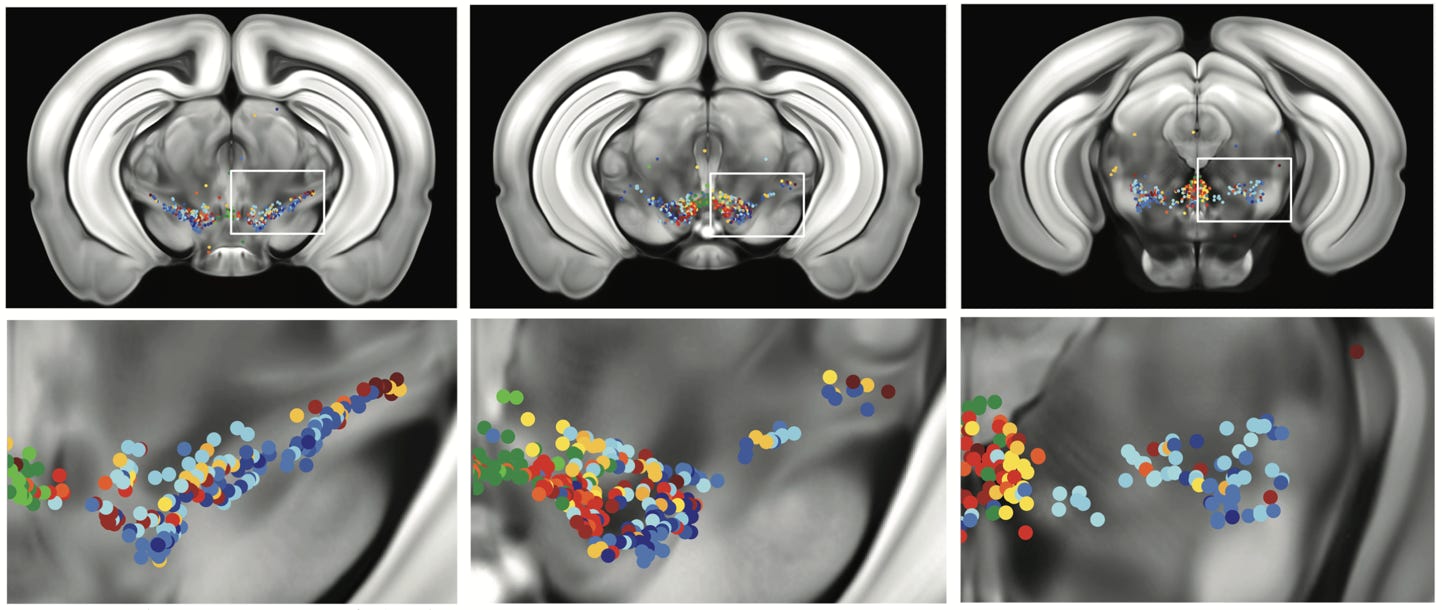WHAT WE DO
Our work is guided by Dr. Poulin postdoctoral work, which 1) demonstrated the molecular heterogeneity of midbrain dopamine neurons, 2) mapped the projections of dopamine neuron subtypes. We are currently developing novel viral and transgenic approaches to illuminate and manipulate dopamine circuits. Ultimately, we hope to understand how these circuits are affected in neurodevelopmental and neurodegenerative disorders.
Mapping dopamine circuits with molecular precision
The brain is more than the sum of its parts. Genuily understanding the brain's most intricate properties requires both a list of its parts, that is, a census of the types of neurons it contains and a map of how these parts are interconnected to form neural circuits. The mammalian brain is estimated to contain several hundreds of cell types, each being a node within a complex network. The challenge of our generation consists of mapping the connection between neuronal subtypes but current approaches to map circuits have important limitations. We are developing novel transsynaptic labelling approaches that we hope will enable the mapping interconnected neuronal populations at single-cell resolution in a high-throughput manner. Our objective is to provide new toolsets to accomplish the daunting task of mapping the brain’s neuronal circuits.
Understanding selective vulnerability in Parkinson’s Disease
Although we know the loss of dopamine neurons leads to symptoms of Parkinson’s disease (PD), we don’t quite know what triggers cell death. Understanding the initial step of neurodegeneration in PD starts by understanding the most vulnerable neuronal population. Our previous work provided the molecular signature of a vulnerable subset of dopamine neurons, and we are currently trying to understand what underpins this vulnerability. Current therapeutic approaches aim to manage symptoms of the disease, but there is currently no treatment to stop the disease from progressing. Ultimately, pinpointing what triggers the death of these neurons will open avenues to new disease-modifying therapies.
Linking circuits with symptoms of neurodevelopmental disorders
Dopamine circuits are involved in several aspects of our daily lives and their malfunctions are suspected to underlie symptoms of several neurodevelopmental and neuropsychiatric disorders. We are currently investigating how dopamine circuit dysfunction could result in symptoms of Autism Spectrum Disorders (ASD). More specifically, we are trying to understand if a particular population of dopamine neurons could be implicated in social behaviours and how its function could be affected by mutations linked to ASD. We believe mapping the circuits affected in ASD could provide insights into how to mitigate disruptive symptoms.








